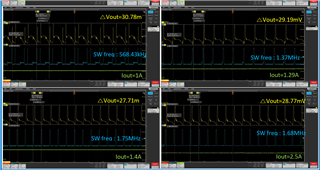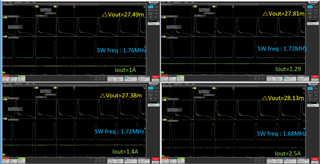Hello Expert,
We are testing it at Vin 5V, Vout 0.475V condition and have some inquiry.
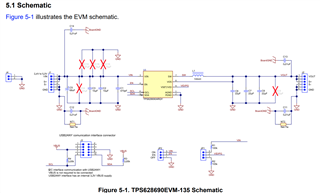
Could you please check and give me your opinion about each items?
1) It was measured that switching occurred twice in the load current range of 0.6A to 1.28A.
Please check whether this behavior is normal or not.
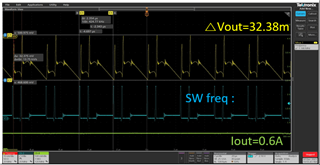

2) When we test the EVM, we can see that the mode changes from PSM to FPWM when load current reached 1.29A.

If we checked the graph on the data sheet, it seems to be in the range of approximately 0.5A to 0.7A.
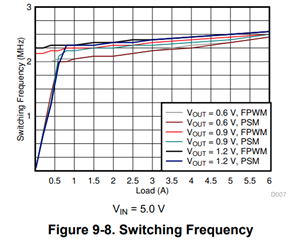
Please confirm and what's the specification for threshold level?
3) When the load is increased, the switching frequency increases up to 1.4A, but switching frequency is confirmed to decrease from 1.4A and above.
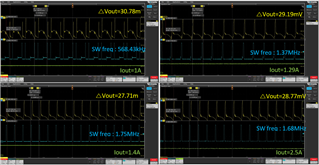
When we look at the datasheet, it says if load increased, Fsw increases and operates at over 2MHz.

Please check whether the swithcing frequency 1.6MHz ~ 1.7MHz at over 1.4A is normal operation or not.
4) The ripple is measured at 30mV not only under transient load but also under static load, which is higher than the ripple spec we consider of 22mV.
What is the applicable output capacitor value to ensure that the output ripple operates within 20mV?
What is the recommended output capacitor value or reference peripheral value to reduce ripple?
It is very important to adopt our product.
Best Regards,
Michael



